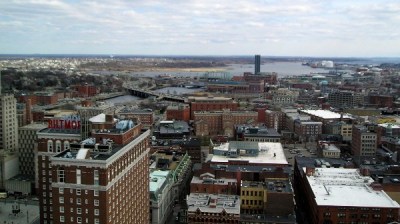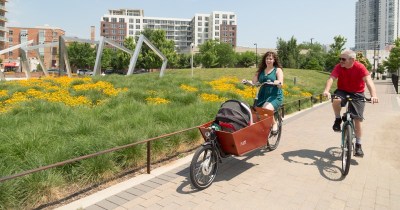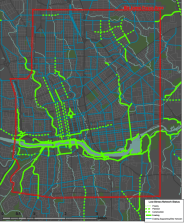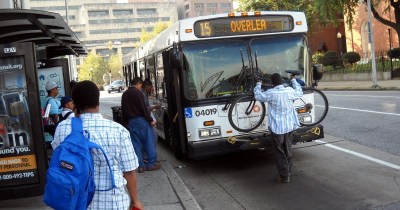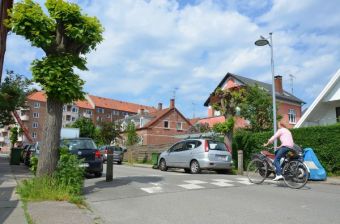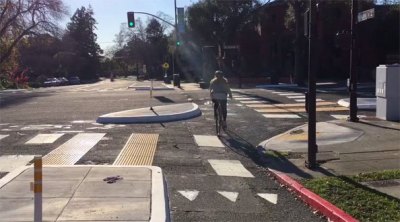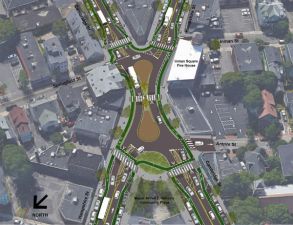Michael Andersen
Michael Andersen writes about housing and transportation for the Sightline Institute. He previously covered bike infrastructure for PeopleForBikes, a national bicycling advocacy organization.
Recent Posts
Providence Is Using Bikes to Build a Future on a Freeway’s Footprint
| | No Comments
Fifty years ago, almost every city in the country discovered the effects a freeway has on the neighborhoods nearby. Now, one of the country's oldest cities is about to learn what happens when you move a freeway out.
Are Women Really More Risk-Averse on Bikes, or Just More Honest?
| | No Comments
A researcher raises some interesting skepticism.
Austin Is Starting 3-Year Plan To Use Bikes To Fight Congestion
| | No Comments
Austin's proposed biking network will increase road capacity as much as a freeway expansion.
In Baltimore, Combining Bikes and Buses to Reconnect a Car-Lite City
| | No Comments
In the first in a series of profiles of the 10 focus areas in the PeopleForBikes Big Jump Project, we look at Baltimore's plans to beef up frequent bus service and install a low-stress biking network in six neighborhoods.
Side-Street Bikeways Only Pay Off If You Have Protected Bike Lanes Too
| | No Comments
Building bikeways only on quiet streets might actually be the worst option, one study says.
Protected Intersections in the U.S.: From Zero to 12 in Two Years
| | No Comments
The country's newest major bike-lane innovation is very young. But so far, it's spreading faster than the protected bike lane did.
The ‘Peanutabout’ Concept Could Be a Breakthrough for Diagonal Streets
| | No Comments
The Boston Cyclists Union shared the inspiring back story behind a new concept for the long, complex seven-way intersection created by the acute crossing of Cambridge and Hampshire streets. Like a lot of good ideas in modern American bicycling history, it involves Anne Lusk, a Harvard public health professor who's been a major brain behind the spread of protected bike lanes in the United States.
Bikes Belong on Main Streets Because Bikes Are Not Mainly for Commuting
| | No Comments
Michael Andersen blogs for The Green Lane Project, a PeopleForBikes program that helps U.S. cities build better bike lanes to create low-stress streets. Trivia question 1: Of all the trips taken by U.S. adults, how many lead to or from somewhere other than work? The answer is 78 percent. Trivia question 2: Of all the […]
Edmonton’s Quick-Build Protected Bike Lane Grid: “A New Model” for Change
| | No Comments
Michael Andersen blogs for The Green Lane Project, a PeopleForBikes program that helps U.S. cities connect high-comfort biking networks. The most interesting thing about this week’s best bike infrastructure news isn’t what’s being built. It’s how it’s being built. Two years ago, the sprawling Canadian prairie metropolis of Calgary decided to buck tradition and test […]
AASHTO’s Draft Bikeway Guide Includes Protected Bike Lanes and More
| | No Comments
Michael Andersen blogs for The Green Lane Project, a PeopleForBikes program that helps U.S. cities connect high-comfort biking networks. As the most influential U.S. transportation engineering organization rewrites its bike guide, there seems to be general agreement that protected bike lanes should be included for the first time. A review panel appointed by the American […]
Unless US DOT Changes Course, Building Protected Bikeways May Get Tougher
| | No Comments
Michael Andersen blogs for The Green Lane Project, a PeopleForBikes program that helps U.S. cities connect high-comfort biking networks. “Hey, how long does it take you to get to work?” “Well, on average my car is usually traveling at 36 mph.” No actual human makes transportation decisions this way. But for some reason, the federal […]
Room to Breathe: The Feds Just Made It Easier to Fit Bike Lanes on Streets
| | No Comments
Michael Andersen blogs for The Green Lane Project, a PeopleForBikes program that helps U.S. cities build better bike lanes to create low-stress streets. A large car is less than seven feet wide. But thanks in part to an obscure federal rule, millions of miles of traffic lanes on local streets around the country are 12 […]
